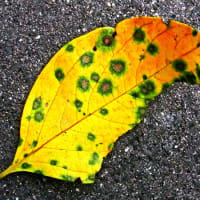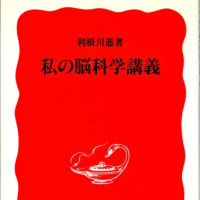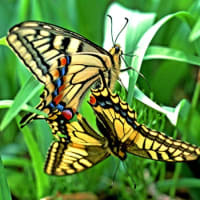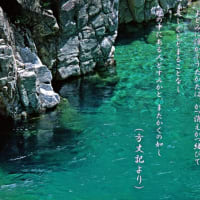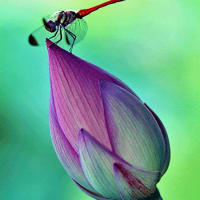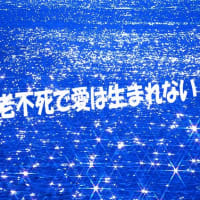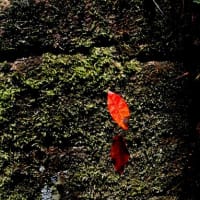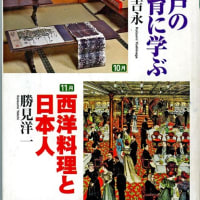ふつう、子どもたちが本格的に教科書を使って学習を始めるのは小学校からです。そして学習するに当たって使用するのは、もちろん教科書です。
科目によって差はありますが、「始めて教科書を使って学習する子どもたちにとっての教科書とは何か(どうあるべきか)?」、そして「教科書がもたざるを得ない一般的限界」。それらの根本的な問題についてほとんど振り返りもせず、疑いもされず、それ以外の指導方法など考慮に置かず、教育と学習指導は流されていきます。
人間の歴史を概括すれば、地球と人間を教材に、先人たちの功績や失敗を糧に、発見・発明・創造を重ね続けてきた歴史だといえます。そしてぼくたちが学び、今も子どもたちが学んでいる教科書の学習内容はすべて、長い月日をかけて先達が獲得してきた英知の結晶やその成果の紹介・集約です。
ごく簡単に言えば、教科書はそれらの概要・要点、いや、さらに「かいつまんで」説明するものです。そして指導の量的・時間的制約から、現状のままを考えれば、どうしてもマニュアル記述的な束縛から逃れることはできません。いわば、子どもたちにとっては実感のない「カス」みたいなものです。
今の教科書のように、写真が多用され、理解に供するように多少の工夫はできたとしても、目的・利用の方法など、どうしても形式的・抽象的になりがちです。形式的・抽象的なものは、子どもたちにとって決しておもしろいものではありません。
そして教科書の内容は、敢えて言いますが「所詮!」、テストでその記憶や理解を点数で「判定」されるものです。それを、何の疑いもなく、あるいは諦念の上で、継続されるばかりです。
本来なら、こどもたちの一生を左右する「学びへの強大なモチベーションに変化するべき環境の宝物」がそのまま消滅したり、不完全燃焼するばかりです。
教科書の前に、子どもたちがきちんと見つけ、知っておくべき「存在」がある。彼らの周りにある環境です。ゲームのことについては、子どもたちは教えられなくても学んでいくのですから、本来環境を学ぶべく生まれついてるはずの(これについては、後日展開します)子どもたちが、それらに夢中になれないはずはありません。
ずーっと、このブログで、こうした考察を展開してきましたが、どうも受験作戦以上の発想に結びつくような反応が見られないので、英文で紹介しようと、今指導を受けながら英語の学習を進めています。次は、その一回目の全文です。ぜひ、英語圏の方々にも読んでいただきたいと思います。

To teachers all over the world
What is the best textbook for small children?
A challenge for Learning of F.W.S(FIELD WORK STUDY)
Living is learning, the importance of training“環覚(the sense about surroundings)”and “学体力(the strong motivation to study) ” “Modernized Terakoya School”,The negative influences of cram school learning for children.

Learning from Richard Feynman’s father and Thomas Edison’s mother vol.3
What is it that children want to know?
That will answer many of their questions.
I guess that many people are annoyed or troubled with questions from little children and their many wonders while bringing them up. But did you carefully reflect on their questions or wonders? What are the things that these kids wanted to know? You’ll be able to find them in these books.
Two books entitled KINDER FRAGEN, NOBELPREISTRAGER ANTWORTEN by Bettina Stiekel, and THE ANSWERS FOR KINDER WONDERS (KODOMO NO NAZE NI KOTAERU HON)by Nakamura Keiko.

Let’s examine some children’s questions.
These questions may be effected by the idea of publishers who are anxious about book sales. But from my life long experience of teaching, all these questions are likely to be in these form.
“Why is the sky blue?” “Why is custard pudding soft, but is stone hard? ” “Why don’t I eat fried potatoes every day?” “Why does war break out? ” “How can we hear each other on the telephone?” “What is air?” “What is wind?” “What makes rain or snow fall?” “What makes leaves turn green into red or yellow in autumn?” “Why do apples or persimmons have seeds?” “Why am I sleepy at night?” and so on. These are the kinds of questions children want to truly know.
But, as I said before, most of us misunderstand learning as working in a room only, or listening and taking notes of a lecture, and we tend never to reflect on children’s questions or they only use their imaginations carefully. They usually overlook what children want to really know, as a textbook a course of study and summarize or give an interpretation. They teach on letter or by textbook only. Is this their ordinary style?
However, children want to know these types of things before studying for entrance examinations.
Remember Edison and his teacher Mr.Engle. Mr.Engle was angry at little Edison’s foolish questions, so as a result Edison left school. He remembered learning for two hours about things that he had never seen before.
Is making light of what children want to really know how to teach pupils currently. They don’t teach what children want to know but simply prepare to pass entrance examinations.
It is interesting to understand what you think about, but usually you must study things that you have little or no interest in by using textbooks. It’s not for you to explore what you want to know. You must study something that is not of interest.
There seems to be little hope for young children to receive motivation and the way to convey the true joy of learning anywhere, neither at home or school or the rest of society.

Now, look back at those two books of children’s questions. Most of all those questions, you see, are the subject matters of learning, aren’t they? In other words, they should feel interested and want to know more, but in reality they feel uninspired dull, and bored. What changes their feeling and motivation for learning? That’s such a pity.
To such children, you must tell them to first, “Watch more carefully and better, feel more.”That way , they will find something interesting that they want to know more about. This motivates children to learn more and study with enthusiasm. They must be aching to know and learn more and more. It’s “ 学体力(GAKUTAIRYOKU)”( I mean, the strong motivation to study).

“環覚the sense about somethings of circumstances ”brings “学体力 the strong motivation to study ”
Many people usually think that book learning is the only way to understand. We must change this historical system to teach natural ways to learn, and think about the meaning of the educational environments where Edison and Feynman were brought up in. That is the subject of this blog.
First of all, it is important that we always give children a sense about circumstances. We must tell them to watch and feel things around them, and make them understand what they study at school is their real circumstances.
They are learning about things such as the earth, air, plants, animals, stars, and human beings. Those are things are that all around us. They can’t be found in books. We often forget that, don’t we? We, just like children want to know about somethings of the neighborhood, don’t you?

These are the things, that we usually learn at school in textbooks, these things must be felt and known naturally in the mountains or in other environments full of nature. But in the cities full of commercialism we are apt to lose such sensitivity. Therefore if you intend to train children about the sense of circumstances, you must actively create interest in something without force to inspire them its curiosity.
When introducing the circumstances of a subject or topic to children will increase their interest to watch more carefully and think more deeply. This will bring them closer to their studies both intellectually and emotionally.
Most people have little or no concern about the process of learning for children. Children should gradually get bits of information with some real life interaction in order for them to comprehend more fully. Edison in his childhood disliked studying things unknown for two hours, but this method will make their dislike of learning vanish quickly. 
When children are small, they know very little of their environment; As they grow they accumulate more knowledge which drives their imagination and interest in the world around them. This teaching way is more effective than learning first by textbook for small children who have different sensitivities than adults.
This is the best method for early child learning rather than preparing them fully for examinations.
To increase their knowledge and experience, small children will get a clearer image of the learning matter, and as a result investigate them more often, and care about the things that they are studying, each day. As the wonders and questions that they encounter increases their interests about their surroundings becomes more active.
These many experiences are the building blocks of knowledge as things in their environment become bigger. That’s the only way to get KANKAKU for children, and GAKUTAIRYOKU.
With the solid building of knowledge, your understanding will enable them to capture the relation or reference of one thing to another. That will be more conducive influence much better for children to study the other subjects and matters of learning.
With the growth of KANKAKU ( the sense about surroundings), children will be able to get a clear image of learning correctly and understand more easily and accurately. This deep understanding gives the joy of learning for children. And that’s the very road to absorb GAKUTAIRYOKU?学体力” for children.
When they find wonders and questions about the environment, you are willing to give them explanations and answers immediately. You should have a Britannica and other resources at your disposal. Those are the methods used by Edison’s mother and Feynman’s father.
I‘ll give are particular account of the matter next Saturday.










